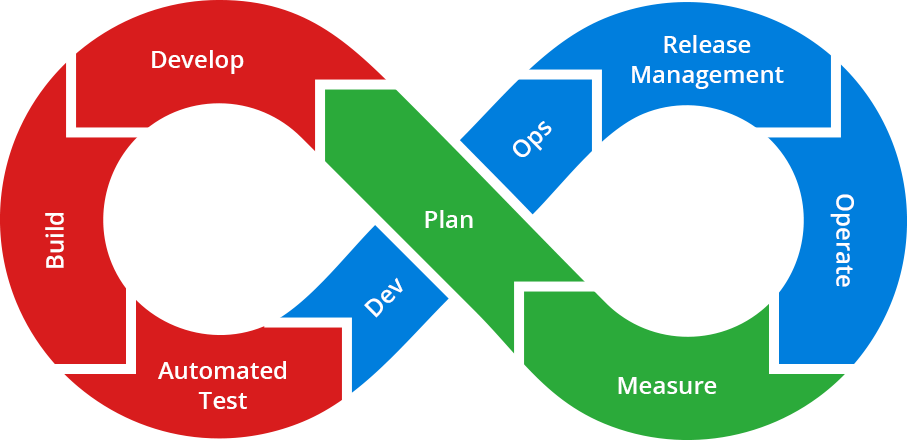Business executives are often asked about their experience with continuous integration and continuous deployment product. They are asked if they find it scary or if they are afraid of releasing the bad software. More than often, they talk continuous delivery with attention or more serious, with concern. They use words such as “more choice,” “more power” or they assert that it will not put in practice in our business as our products are of the enterprise. But we have read a lot about the achievements of continuous delivery (CD). The activities related to CD are followed by individuals in professional departments and IT organizations to improve business.
What is Continuous Delivery?
Continuous Delivery (CD), simply stated, enables stable and quick development improvements to be produced by assuring that technology is still in an implementable condition, irrespective of how often thousands of developers modify it every hour. Metaphorically, CD means that the approved architectural plans are practiced by all designers at a building site (Amazon).
Why is this important?
A secure standard codebase, still ready to go, and is the clear benefit of CD. And you shouldn’t have any flaws going out to customers and you should fix them easily if you do. Even more than that, Continuous delivery is essential to agile because it ensures that the Feedback Loop can be closed at any time. You will easily provide statistics about what you (if anything) trust your software has, whether your software has strong measurements. Nevertheless, this knowledge must always be able to be addressed. And, you will not need to gather details every day if you wait six months to release the applications (extreme uncertainty, 2015)
Continuous Delivery (CD) supports organizations in delivering or supporting or updating software. They do so with minimal risk and in less time. This way, a CD is said to optimize the performance of an IT department, improves the enterprise value and even boost revenue. In other simple words, Continuous Delivery makes your company more competent and more profitable.
What is the goal of Continuous Delivery?
CD is an information development strategy in which organizations create information in quick periods, making sure that it is launched manually at any moment and at any rate. CD aims to ensure painlessly low-risk device implementations, which can be done on-demand at any time. It is fairly easy to obtain zero-down period deployments that are undetectable to users by utilizing trends such as blue-green deployments.
Continuous delivery is ready and prepared to release any update of any device at any moment, although continuous deployment is also necessary. They require an agile method that provides a structure for small, regular changes and feedback.
How can you utilize Continuous Delivery?
The process of CD is explained in various phases. Read each carefully to understand the procedure.
1. Develop a culture for learning
Through expertise and abilities to produce CDs of quality solutions, you can introduce practices for work-load reduction. Carefully assess your marketing organization’s capability to establish the expertise, abilities, and method and behavior lapses of your team.
Establish professional groups that promote business learning and provide valuable resources for the advancement of skills. Adopt activities and procedures to facilitate quality education, as well.
2. Develop agile fluency
Take three main acts when you begin the journey of your CD journey:
I. Start with setting simple metrics. Question yourself whether you are conscious about the steps towards your target auspiciously;
II. Using agile methods. Think if you and your colleagues are prepared and equipped to continue implementing agile methodologies. Raise a question about your qualification or if it is enough to take the next step; and
III. Bimodal IT deployment. Question about how agile teams can benefit from predictability. Why you must avoid bottlenecks and the dependencies in the exploratory teams between Mode 1 and Mode 2?
3. Mature agile practices
Incorporating agile systems and methods is not simple. It is management systems, each with specific aims, which give little guidelines about how to provide workable consumable applications.
Tackle these two fields as the project is developed and agile: Agile strategies include guidance and suggestions to help improve the consistency of the program and continuous reviews on the preparation of the framework to be implemented.
When designing new apps, using a componentized architecture and reconstruct or legacy applications is believed to encourage such applications to take advantage of the agile and DevOps. The experience required to make those applications that are expected to allow CD to completely profit from the agile and DevOps techniques.
4. Automate infrastructure
Infrastructure and operational (I&O) team, growth, security and data management are progressively under pressure to deliver solutions faster. It is a long time after it is appropriate to wait for days, weeks or even months for an individual to build and establish an atmosphere.
DevOps allows these teams to improve code releases frequency by applying agile standards and methods. But effective DevOps teams need the capacity to:
I. Configures resources to enable the management and maintenance of modern software, not just engineering teams but also I&O teams.
II. Install and handle the software when it comes to deployment and maintenance. Also, here a variety of questions need to be asked: will containers be used? What are we going to do? How are we managing them? Are we transferring our software and files into the cloud?
III. Applications and data are safe. It is one of the most critical activities for defense personnel. The accelerated level of transition along with shifting apps and cloud services makes it difficult to secure the vital properties.
IV. Apps for tracking. Application output analysis is important to include quick objective reviews concerning the effectiveness of the new update in the growing usage of lean and agile DeVos-oriented practices. The details will, therefore, be accessible to help rapidly assess output and quality adjustments associated with these increasingly regular development updates.
5. Improve delivery flow
If this phase is completed, qualified practitioners will find some specialized topics which require advanced agile technology and DevOps techniques to ensure success: the implementation of an agile organization framework. The goal of agile business models is to promote the management of dynamic and agile launches and integrated solutions.
The implementation of the concepts of Micro service Architecture (MSA). MSA designs integrated systems that enable agile distribution and flexible on-site and cloud implementation. When introduced, MSA impacts engineering teams ‘ product creation and delivery.
Challenges of Continuous Delivery
While we completely agree that CD is beneficial for business in so many ways, it may be challenging for companies to plan and construct robust continuous delivery pipelines. The reality is that CD needs a massive restructuring of technological practices, organizational philosophy and business thought. A huge obstacle to get going always exists. These challenges could have been overlooked over the years because it needs a significant expenditure in the information supply infrastructure of a business, which makes it an even more intense and challenging.
The Future of Continuous Delivery
In the future, the IT sector will need to invest in three areas of performance: technological, operational and cultural for CD success. Organizations can’t render CDs without these aspects. These are all profoundly intertwined and can help CD to thrive.




